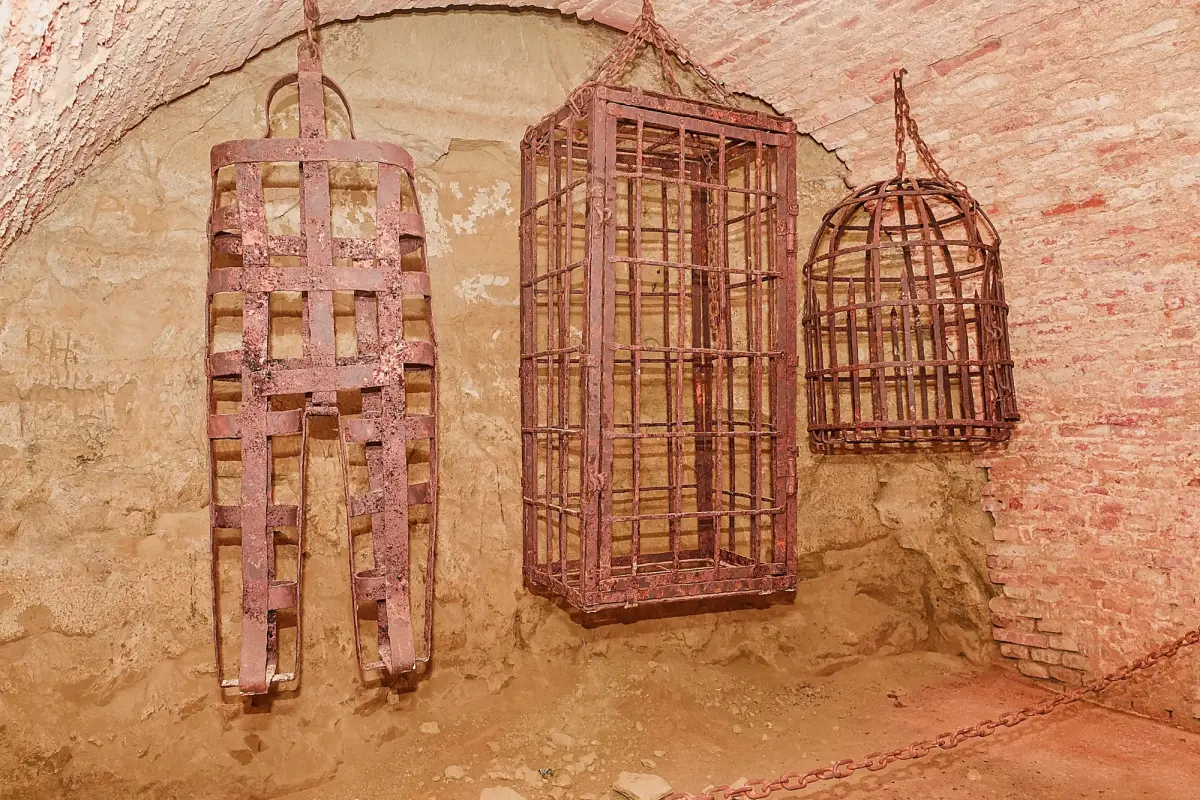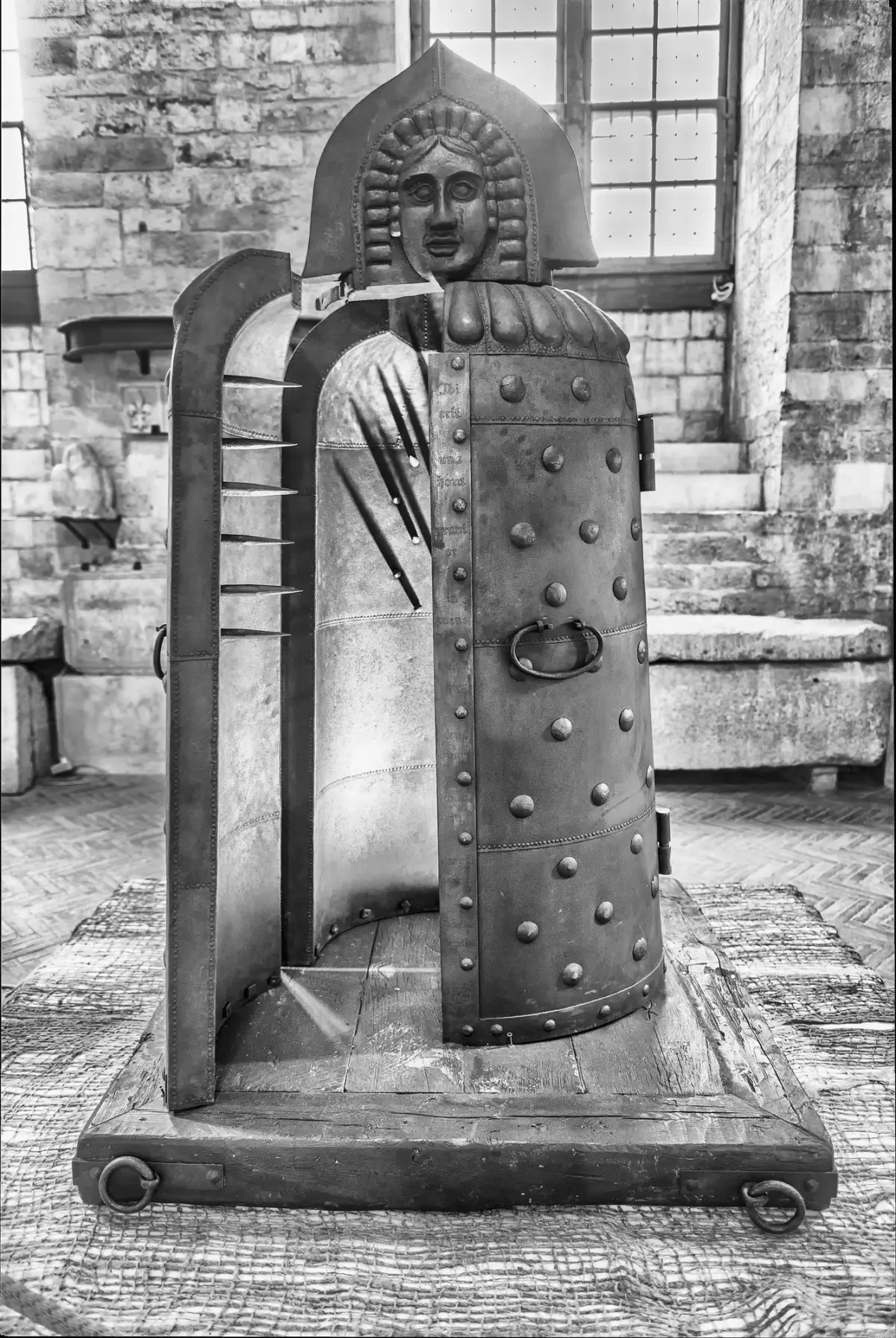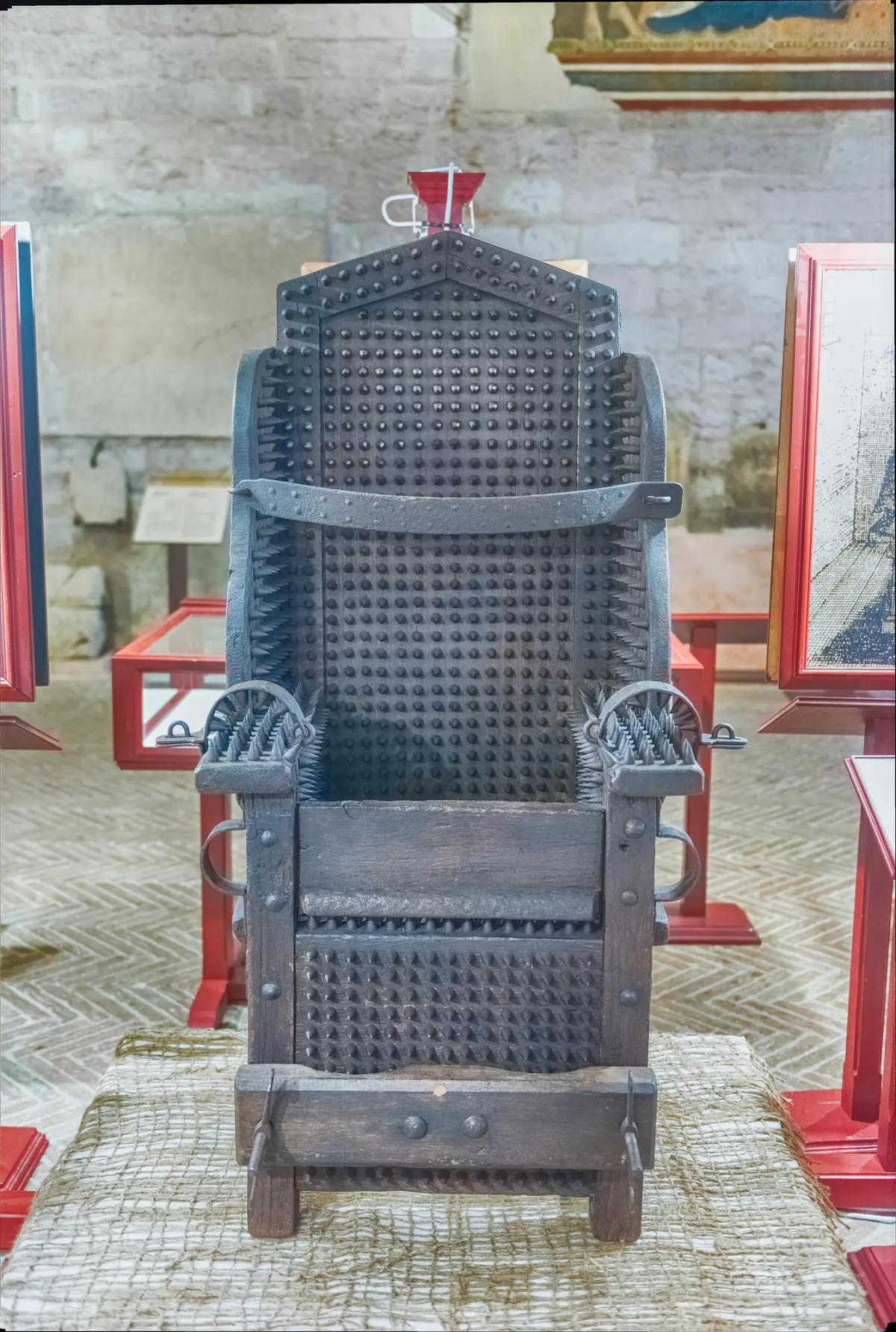13 Fake Torture Methods People Think Were Real

In my childhood home town, we had a museum of medieval torture. At nine years old, we visited for a presentation one night and I watched these machines in horror. Petrified I carried these dark symbols with me for years.
I thought I knew the grisly realities of historical torture and execution methods, but most never really existed.
Many of the most notorious devices and punishments we think are real turn out to be sensationalized myths.
13. The Gibbet as a Form of Medieval Punishment
Myth: The gibbet was a medieval torture device where victims were hung alive in cages or frames and left to die a slow and agonizing death.
Reality: While gibbeting did involve displaying executed bodies in cages, the details of its application as an active torture method while victims were still alive are often overstated for dramatic effect in popular depictions.

12. The Iron Maiden as a Medieval Torture Device
Myth: The iron maiden was a common torture device used during the Middle Ages to inflict excruciating pain and death on victims. Its spiky interior would pierce the body when the doors were closed.
Reality: Historians believe the iron maiden was likely a 19th-century creation and not used in medieval times as often depicted. There is little evidence of its use as an authentic medieval torture device.

11. The Blood Eagle as a Viking Execution Ritual
Myth: The blood eagle was a brutal Viking ritual where the victim's ribs were cut from the spine, and the lungs were pulled out to resemble wings.
Reality: While vividly described in Norse sagas, many historians doubt the blood eagle was ever practically employed as an execution method, given the extreme nature and lack of credible evidence.
10. The Brazen Bull as an Ancient Greek Torture Device
Myth: The brazen bull was an ancient Greek torture and execution device made of brass, where victims were roasted alive inside the hollow metal bull.

Reality: While the brazen bull is described in Greek texts, its historical accuracy and regular use as a torture method are heavily debated by scholars, with many questioning its practicality.
9. The Judas Cradle as a Medieval Torture Instrument
Myth: The Judas cradle was a pyramidal torture device used during the Medieval and Spanish Inquisition periods to inflict severe pain and often death.
Reality: There is little concrete historical evidence to confirm the widespread use or even existence of the Judas cradle as a genuine medieval torture device, despite its popularity in media depictions.
8. The Pear of Anguish as a Punishment Tool
Myth: The pear of anguish was a horrific medieval torture device used for punishing homosexuality and other "immoral" acts by penetrating and expanding inside the victim's orifices.
Reality: While displayed in many torture museums, the pear of anguish was likely more of a cautionary or symbolic artifact than a regularly employed tool, with limited evidence of its practical use in torture.
7. The Spanish Donkey as a Medieval Punishment Device
Myth: The Spanish donkey was a severe medieval punishment where the victim was forced to straddle a wedge device, resulting in gradual impalement.
Reality: Despite its plausible-sounding nature, actual historical records of the Spanish donkey's widespread use are scarce, and its existence is often questioned by historians.
6. The Breast Ripper as a Torture Device
Myth: The breast ripper was a horrific medieval torture device used to mutilate and tear off women's breasts as punishment.
Reality: While the name and concept are shocking, the actual use of a dedicated "breast ripper" device is not well-documented in historical records, suggesting it may be more myth than reality.
5. The Chair of Torture as a Medieval Device
Myth: The chair of torture was a common medieval device with spikes, blades, and restraints designed to inflict severe pain and torment on victims.

Reality: While various gruesome chairs are displayed in museums, many historians believe these were likely not authentically medieval torture devices but rather created for shock value and entertainment.
4. The Rack's Use in Medieval Torture
Myth: The rack was a medieval torture device used to brutally dislocate and stretch victims' limbs, often accompanied by other gruesome torments.
Reality: Although the rack did exist for interrogation and punishment, the elaborate and gruesome uses depicted in films and literature are often exaggerated compared to its historical application.
3. Keelhauling as a Common Maritime Punishment
Myth: Keelhauling was a common maritime punishment where sailors were dragged under the ship's keel, resulting in severe lacerations and often death.
Reality: While keelhauling was undoubtedly brutal, its frequency of use is often exaggerated, as it could potentially damage a ship's hull and was an inefficient form of punishment.
2. The Wheel as an Execution Tool
Myth: The breaking wheel was a torture device where victims were tied to a large wooden wheel and had their bones systematically shattered by an executioner's hammer.
Reality: While the breaking wheel was indeed a real and gruesome execution method, the dramatic and varied depictions in popular culture often stretch the historical facts and specific applications.
Myth 1. The Saw as a Medieval Torture Method
Myth: The saw was a common medieval torture device used to slowly and excruciatingly dismember victims limb by limb.
Reality: Although a simple and gruesome concept, many detailed accounts of the saw's use in torture are likely more fictional than factual, as historians have found limited evidence of its widespread use for this purpose.
